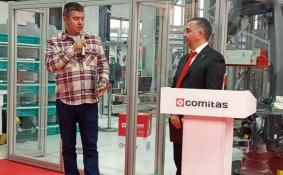Scientific & Practical Journal

Editorial News
Dear readers! In September the CeMAT RUSSIA exhibition was held, which showed everyone that innovations and robotics are increasingly penetrating the logistics industry. We can safely say that many technologies are tested here, and only then they go out into the world. However, it is not only CeMAT RUSSIA that demonstrates the prevalence of the digital agenda.
Dear readers! This is the ninth issue of the journal, which turned out to be very rich and diverse. Traditionally, the issue is opened by an analyst. The material by Alina Nasyrova from the Market Guide Agency, dedicated to investments in warehouse complexes in Russia, recalls the importance of developing logistics infrastructure for the integrated development of regions.
Dear readers! We present to your attention the eighth issue of the magazine and its materials.
PHOTO OF THE WEEK
CITATIONS
Logistic coordination system: state regulation of interaction on the common infrastructure of business entities in order to increase their efficiency and adaptability
Vladimir Eskin6 / 2020 | SUPPLY CHAIN MANAGEMENT
Annotation. The entry of the world economy into the active phase of the financial crisis is obvious. There is a gap of established supply chains, a change in the direction and intensity of commodity flows. As a result of the changes, the number of traffic jams and abandoned trains on the network is increasing. The excess of wagons and the abundance of operators did not improve, as the reformers had previously expected, the situation, but significantly complicated it. Compensation for the problems lies in the way of coordinated planning and supply chain management within the framework of the model of inter-organizational logistics coordination. The specifics of the Russian economy require the active participation of the state in creating a system of logistic coordination.
Key words. Logistic coordination system (SLK), inter-organizational logistics coordination, holistical approach, high traffic intensity, turnover of rolling stock, the speed of delivery, nonpublic access railroad, digital platform.










